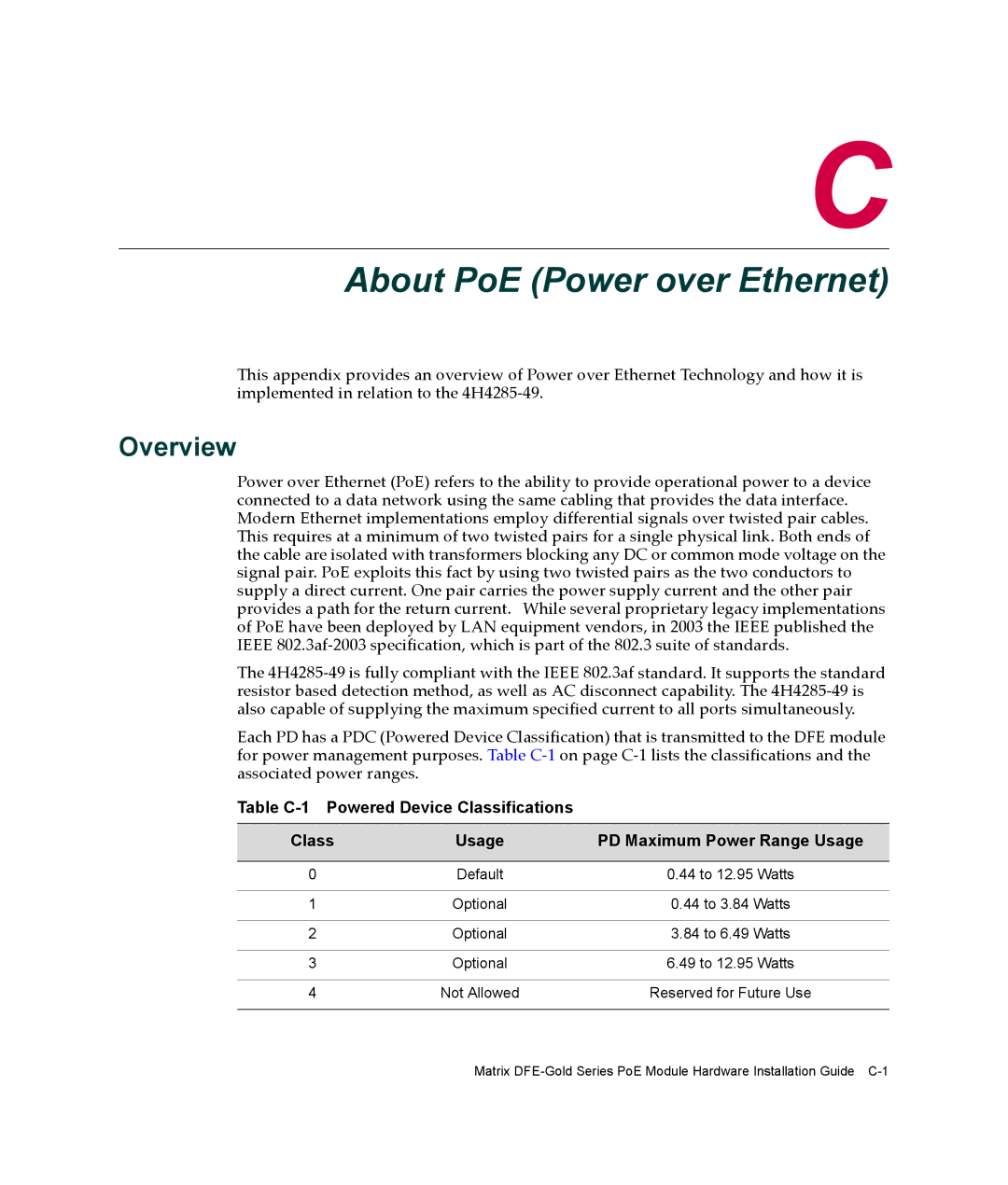C
About PoE (Power over Ethernet)
This appendix provides an overview of Power over Ethernet Technology and how it is implemented in relation to the 4H4285‐49.
Overview
Power over Ethernet (PoE) refers to the ability to provide operational power to a device connected to a data network using the same cabling that provides the data interface. Modern Ethernet implementations employ differential signals over twisted pair cables. This requires at a minimum of two twisted pairs for a single physical link. Both ends of the cable are isolated with transformers blocking any DC or common mode voltage on the signal pair. PoE exploits this fact by using two twisted pairs as the two conductors to supply a direct current. One pair carries the power supply current and the other pair provides a path for the return current. While several proprietary legacy implementations of PoE have been deployed by LAN equipment vendors, in 2003 the IEEE published the IEEE 802.3af‐2003 specification, which is part of the 802.3 suite of standards.
The 4H4285‐49 is fully compliant with the IEEE 802.3af standard. It supports the standard resistor based detection method, as well as AC disconnect capability. The 4H4285‐49 is also capable of supplying the maximum specified current to all ports simultaneously.
Each PD has a PDC (Powered Device Classification) that is transmitted to the DFE module for power management purposes. Table C‐1 on page C‐1 lists the classifications and the associated power ranges.
Table
Class | Usage | PD Maximum Power Range Usage |
|
|
|
0 | Default | 0.44 to 12.95 Watts |
|
|
|
1 | Optional | 0.44 to 3.84 Watts |
|
|
|
2 | Optional | 3.84 to 6.49 Watts |
|
|
|
3 | Optional | 6.49 to 12.95 Watts |
|
|
|
4 | Not Allowed | Reserved for Future Use |
|
|
|
Matrix
